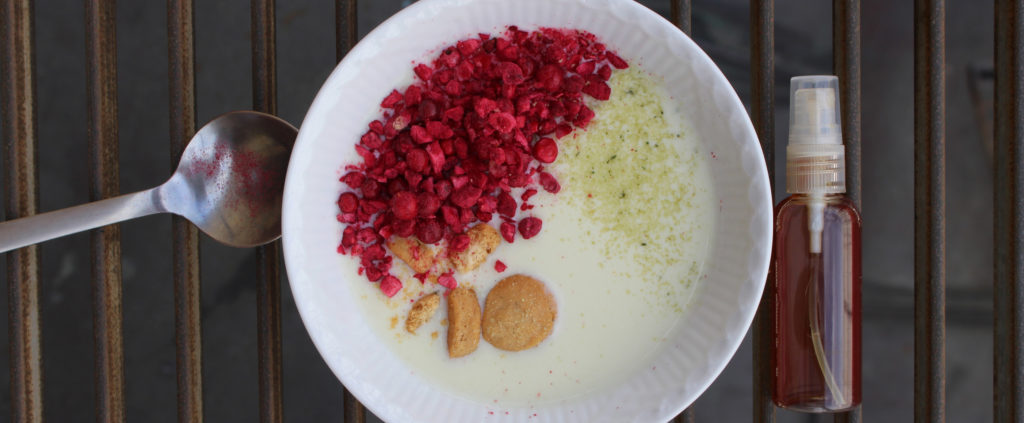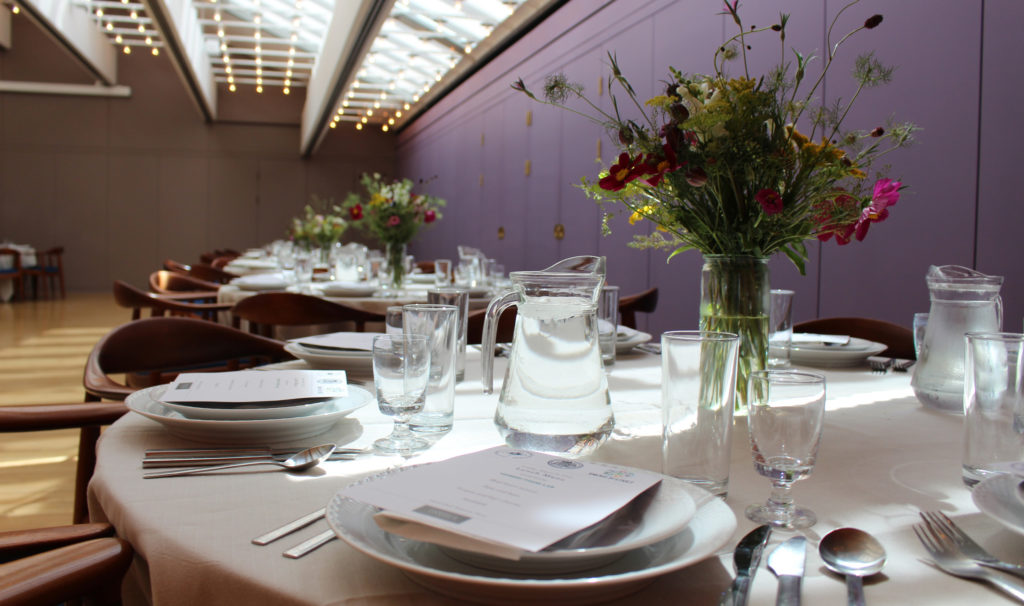by Josh Evans.
In August 2014, we participated in a Symposium here in Copenhagen called ‘The Science of Taste’, held at the Royal Danish Academy of Sciences and Letters and organised by Ole Mouritsen, biophysicist, algae and umami expert, and keen gastronome (and also a member of our Board of Directors). It had a pretty great line-up of speakers, all working in different ways to unravel the complexities of food and taste.
We had the honour and responsibility of cooking lunch on the first day for this esteemed group. Roberto led the team in developing a menu of four dishes based around some of our research projects and principles. The following descriptions are taken from our paper ‘Place-based taste: geography as a starting point for deliciousness‘, published in Flavour Journal, which recounts the process of developing the menu for the event.
1 Beef heart tartare
We wanted to illustrate the particular qualities of (what are nowadays) underutilised parts of the animal. Heart is a continuously working muscle, which gives it a very different texture than skeletal muscles. Our hearts came from 1-year-old biodynamic calves from Østagergård in Jystrup, Denmark, which we minced while maintaining some structure of the meat. We seasoned the minced heart with black garlic, fresh tarragon, and fig leaf tincture. Black garlic is a product originating in East Asia, and is produced by keeping garlic in a warm, humid environment with little airflow for around 60 days (we seal ours in vacuum bags and keep them at 60°C). This process denatures the alliinase enzyme responsible for transforming non-volatile alliin into volatile allicin, the pungent sulphurous compound in garlic, especially when its cells are ruptured. Moreover, the low but steady heat creates cascades of low-temperature Maillard reactions, although at a much slower rate than the Maillard reactions commonly experienced in cooking. The finished garlic is characterised by a deep black colour and complex caramelised fragrances.
The tarragon was grown biodynamically at Kiselgården in Ugerløse, Denmark, and provided the freshness to complement the dark richness and acidity of the black garlic.
The Danish island of Bornholm, between Sweden, Germany and Poland at the mouth of the Baltic sea, has a unique microclimate along its southern coast: soft beaches of fine white sand and an exceptional warmth that lasts later into the fall than is characteristic of the region. This microclimate gives rise to a particular ecology, which includes a robust population of fig trees. In the summer we made a tincture – a strong infusion of high-proof ethanol, which has both gastronomic and medicinal applications—from some of these fig leaves, yielding a concentrated source of their characteristic aroma: part coconut, part coumarin (the sweet-smelling compound in tonka bean, woodruff, and sweet clover, among others). A small amount of tincture provided complex herbal top notes, binding the dish together.
We served the dish with a crispbread laminated with wild mugwort and beach roses, and a chilled shot of fragrant, woodsy gin from the island of Hven in the Øresund.
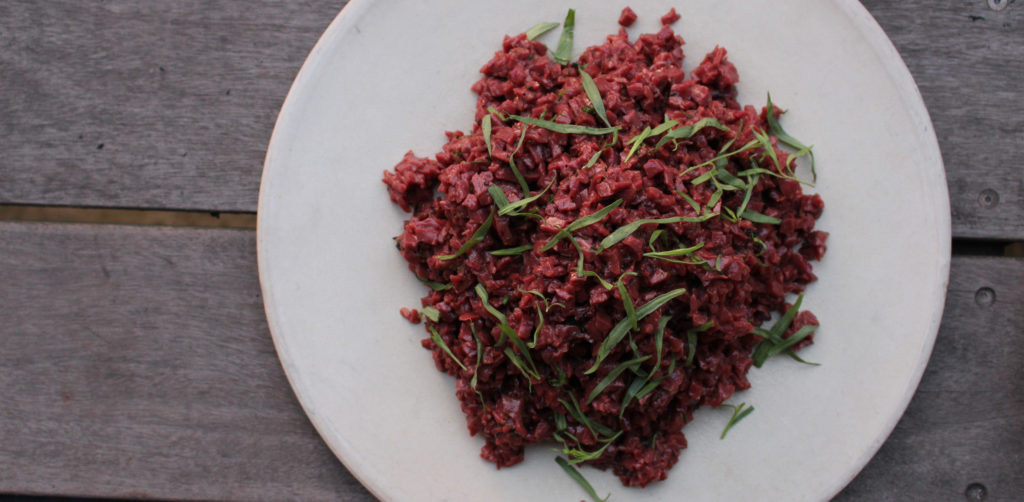
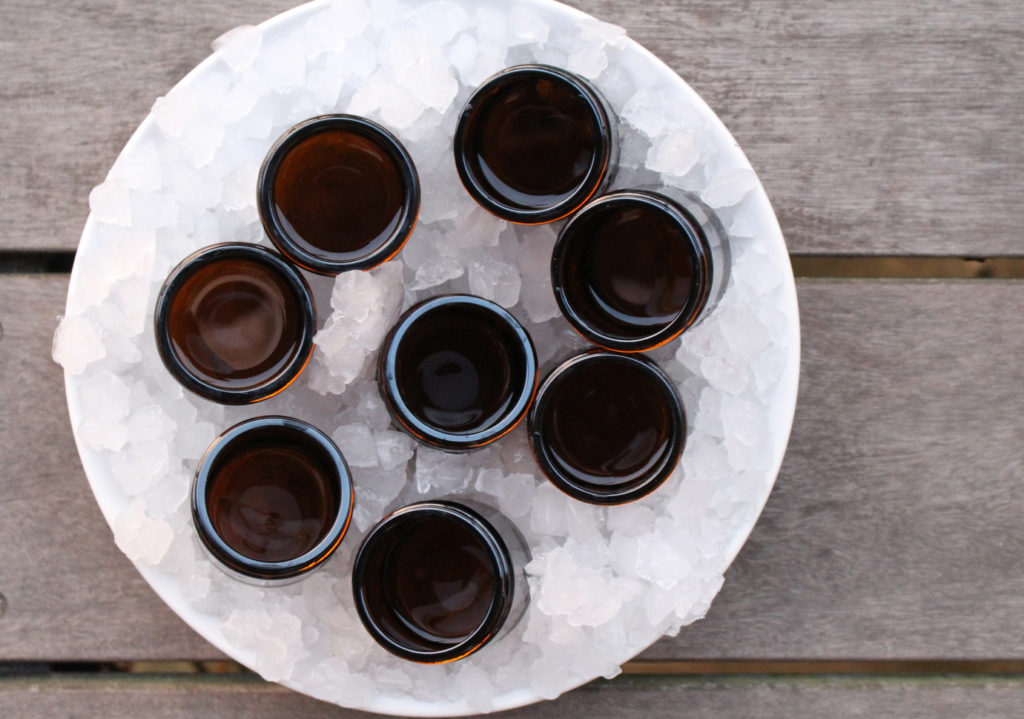
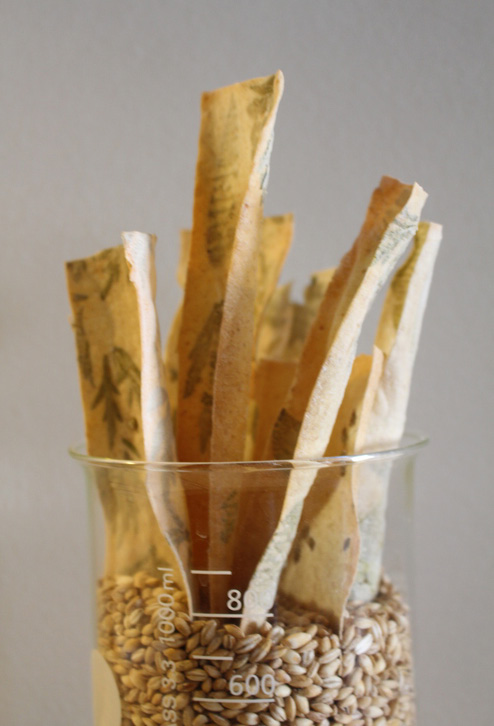
Laminated crispbread with wild mugwort and beach rose
2 Peas ‘n’ Bees
This dish emerged from several sources of inspiration. In June 2014, some of our team visited the island of Livø in the Limfjord in northern Jutland to conduct fieldwork for our insect research. While on the island investigating the European cockchafer, we also obtained some fresh bee larvae from a local beekeeper, along with some very mature lovage stems from her garden. As part of an outdoor experimental cookout we steamed the delicate, fatty larvae inside the lovage stems along with jasmine flowers that at the time were riotously in bloom. The herbal and floral notes of the larvae were enhanced in this rustic and simple preparation, and we wanted to take it further in a more controlled context.
Roberto was reminded of an old-school Italian dish from the 70s called Risi e Bisi—risotto with peas. The bee larvae sort of reminded us of the rice. The texture of the dish was enhanced with pearled barley boiled in lovage broth, to create a summery, room-temperature soup of creamed fresh peas and lovage, with some blanched bee larvae, fried bee larvae, fresh lovage, and fermented bee pollen to garnish.
Bee larvae are often a waste product of organic beekeeping, as the drones are removed periodically throughout the summer months as a strategy to lower the Varroa mite population in the hive. They also happen to be extremely nutritious—around 50% protein and 20% unsaturated fats—and their flavour, like honey, can vary according to the local flora and the time of year. All of this makes them a very exciting product to work with in the kitchen. The bee larvae we used in this dish we obtained from a beekeeper in Værløse, outside of Copenhagen, Denmark.
Along with this course, we served large sourdough loaves made with flour from Øland wheat, an old variety of wheat from the island of Øland in Sweden, and virgin butter—carefully cultured cream churned until just before the butterfat and buttermilk separate, yielding a foamy emulsion with a cloud-like texture and bright acidity.
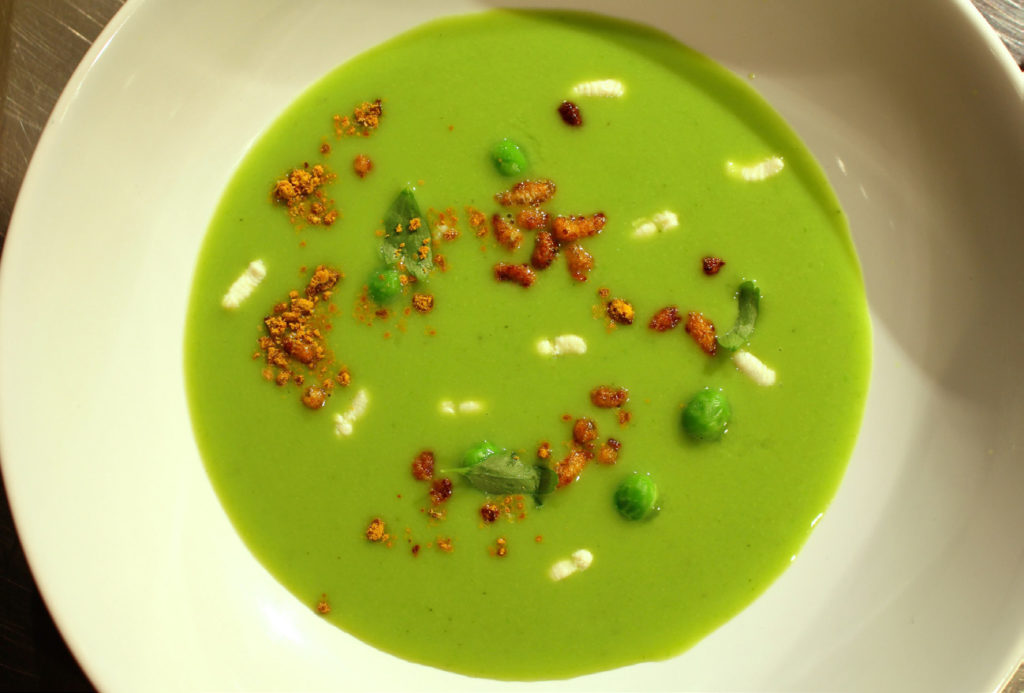
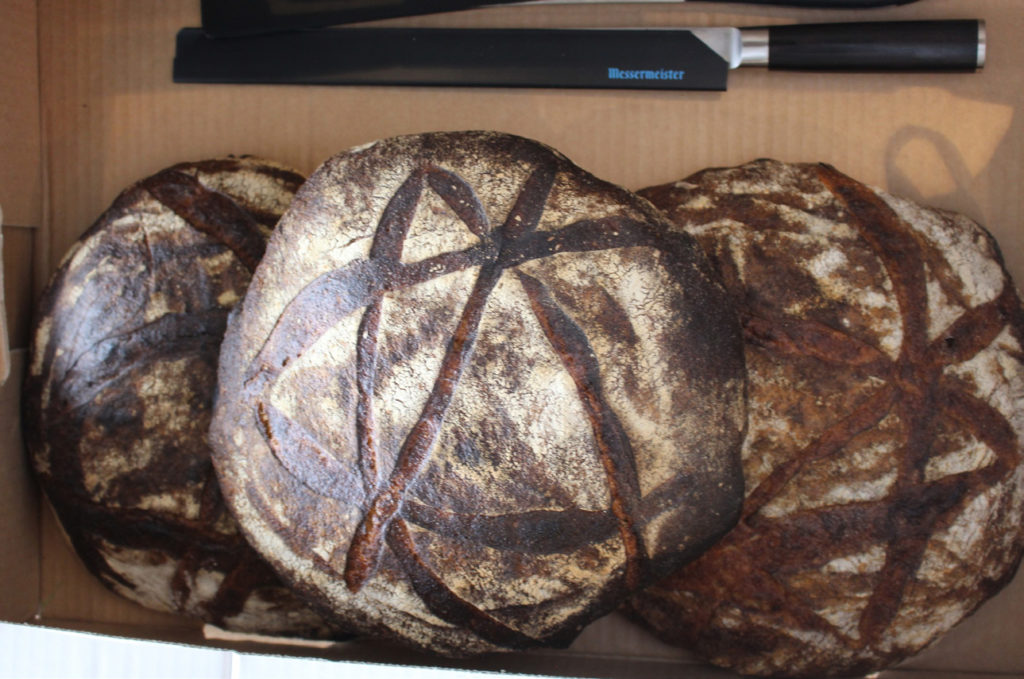
3 Tongue and koji-chovies
Here again we wanted to showcase the delicious potential of another less-used cut. We cooked the tongues from the same calves from Østagergård (as used above) whole, sous vide for four hours at 85°C with lots of aromatics. This was followed by two hours more at 55°C, with butter added. Then we sliced them and served them slightly warm with lots of fresh greens and herbs and a bright herb sauce. To go along with the tongue, we boiled some new potatoes and tossed them in an umami-rich sauce of koji-chovies and halved pointy cabbage we had grilled and compressed with shio-koji to break it down and bring out its natural sweetness. Both the koji-chovies and shio-koji are excellent examples of translation of technique from other culinary traditions. Taking our love of cured anchovies and applying it to a common small fish of the Nordic region, for example. Or using the versatility of koji, grain fermented with the fungus Aspergillus oryzae, to enhance our fermentation techniques and other processes. The koji, made mainly on rice in East Asia, produces amylases which saccharify the starches allowing the substrate to be further fermented into alcohol (as is the case with sake, or rice wine), along with proteases and lipases which can be further used to break down proteins into amino acids and fats into fatty acids. The enzymatic breakdown of proteins is the main mechanism that gives rise to umami taste in many products, such as soy sauce, miso, and their analogues around East and South-east Asia.
With the main course we served a juice made from Danish apples and seasoned lightly with juniper berries.
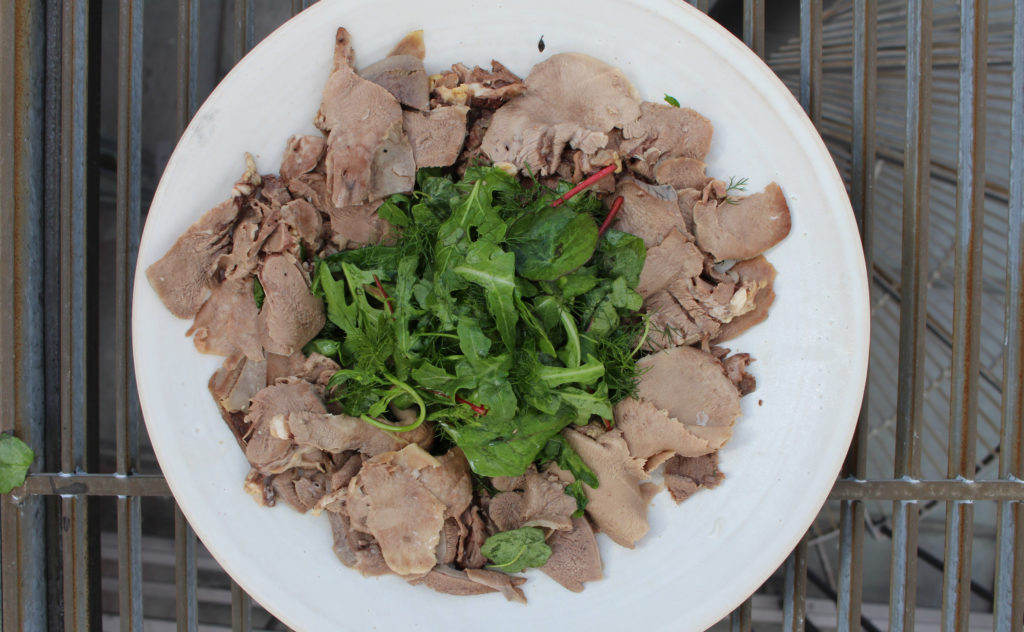
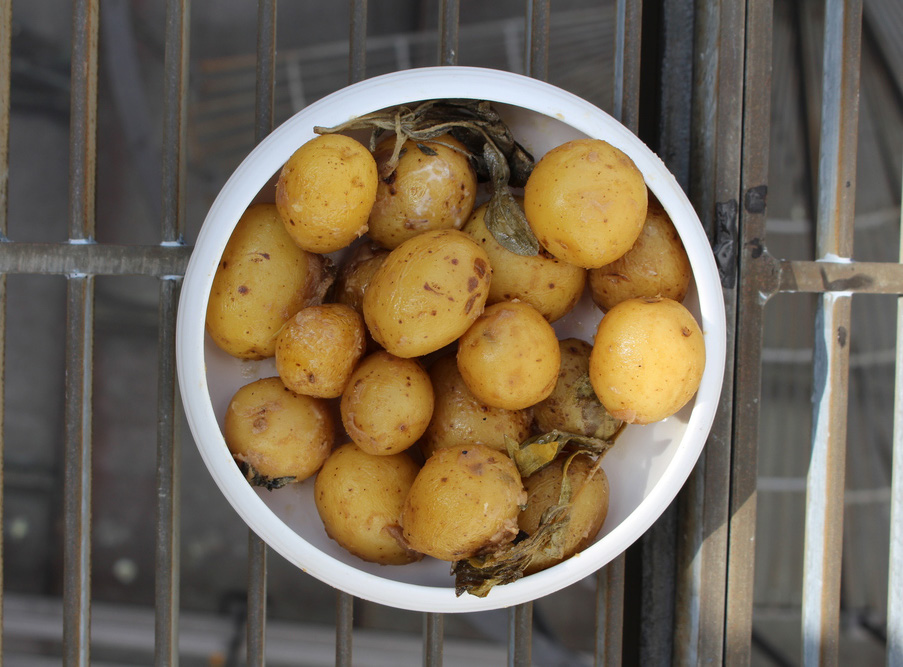
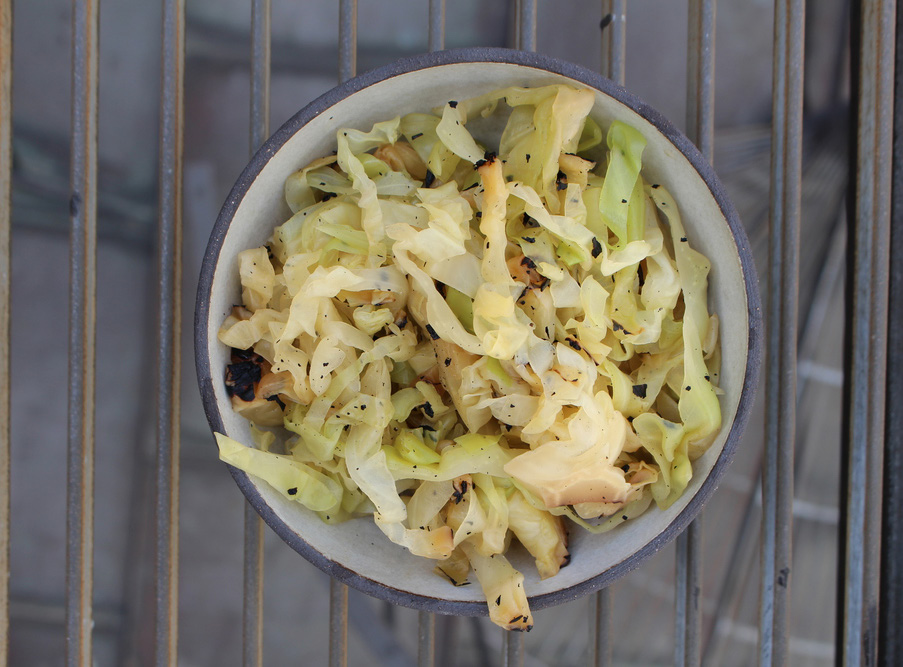
4 Koldskål
We finished with our take on a classic Danish summertime dessert: koldskål. It is a buttermilk soup with a base of egg yolk, traditionally aromatised with lemon zest and vanilla, and served with small cookies called ‘kammerjunkere’ and sometimes with fresh strawberries. In this version we opted for a more herbal profile, infusing the soup with lemon verbena, and serving with a mixture of freeze-dried lingonberries, raspberries and cranberries, and homemade kammerjunkere topped with lemon thyme sugar.
As this dish was served, we sprayed a finely misted tincture of birch buds over each table, a beautifully resinous and enveloping aroma from this underused part of the tree that conjures up forests of this most Nordic of trees.
We offered this variation on a beloved Danish classic to share the delicious Danish summer with our Danish and international guests alike.
